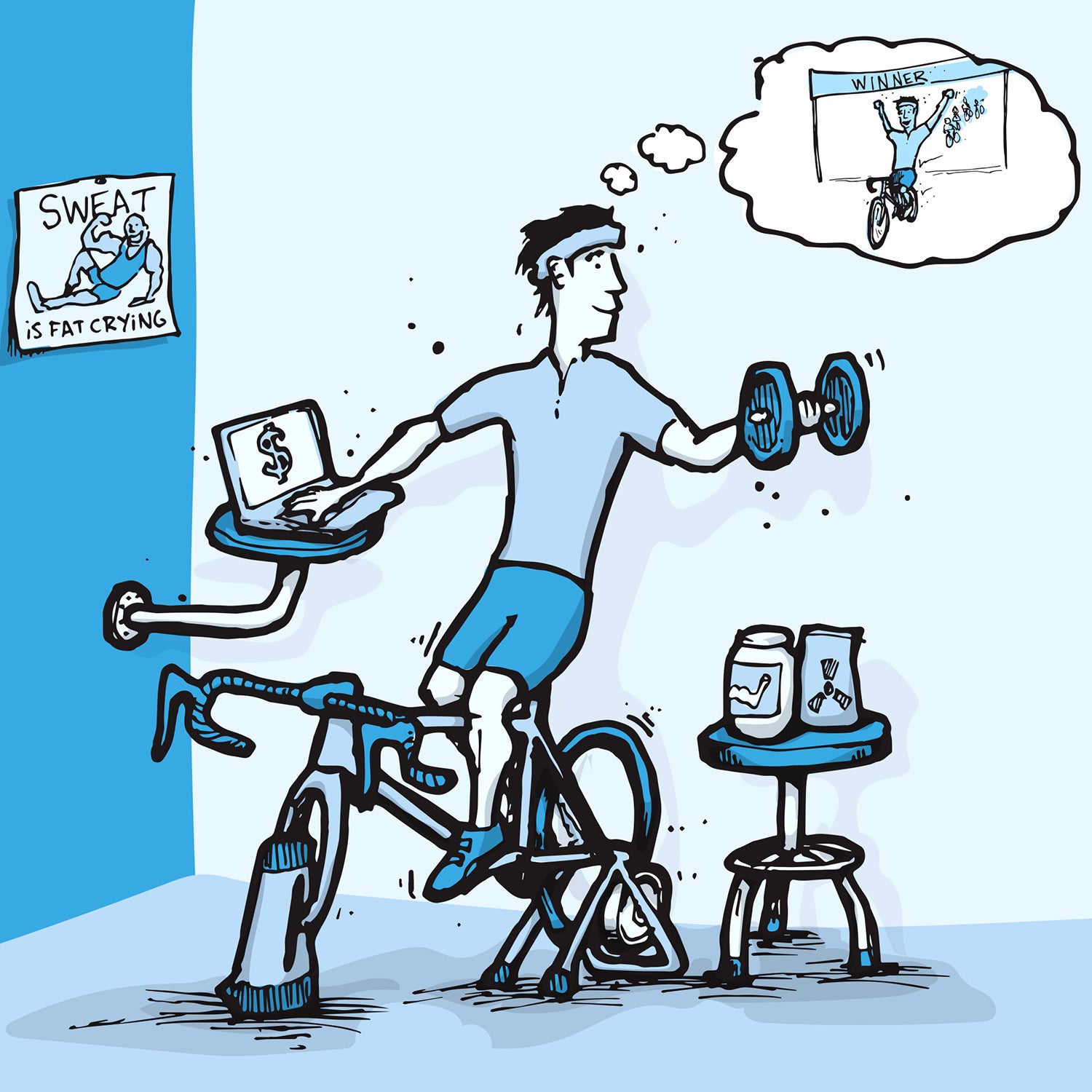Common sense would have it that the biggest risk you face when cycling is that of injury, whether due to driver inattention, equipment failure, or coyote attack. But there’s another misfortune that can befall you that is in some ways ways equally as debilitating: Succumbing to a condition that is known as “getting fit.”
On the surface of it, this might seem like an absurd comparison. After all, an injury will keep you off your beloved bike, while being fit will allow you to ride that bike even more. However, such facile comparisons fail to account for the insidious nature of fitness, the difficulty in managing it, and the long-term problems both on and off the bike that are commonly associated with it.
Of course, there are cyclists who go out looking for fitness despite all the obvious warning signs (Google “Chris Froome shirtless” for examples of such warning signs), but for many of us, fitness is something we acquire quite by accident. It starts out innocently enough. Maybe you find yourself with some time off work, so you decide to do some binge riding, or maybe you sign up for a big cycling event that takes you a little bit outside your comfort zone, and your endorphins trick you into feeling like you’ve accomplished something. Afterwards, you’re a little more tired than usual, but all it takes is a little recovery ride for the husks to fall off your legs, and you emerge feeling lighter, stronger, and faster than you did before.
The sensation of riding the same distances you used to with less effort is an intoxicating one. It’s in pursuit of this sensation that people do things like buy $2,000 wheelsets and —and, in certain circumstances, even . But while equipment won’t make you any faster (motors excluded), fitness is the real deal. And once you’ve got it, you don’t want to relinquish it. You’ll do anything to keep that buzz going.
First, you increase the time and duration of your rides. Then you start cramming them into holes in your schedule that you never noticed or considered before. If you’re a working person with a family, then sleep is often the first thing to go, because why squander time on one of your most essential and satisfying bodily functions when instead you could be doing pre-dawn hill repeats? Next, paradoxically, you start craving all that expensive equipment you no longer need anyway because you’re fast now. You go buy that $2,000 wheelset despite having already shaving two minutes off your local climb. Your increased training volume also means you’re using up equipment much faster now: you go through chains like you used to go through tires, and tires like you used to go through socks. So while you may in fact be going the same distance with less effort thanks to your fitness, you’re also buying more expensive equipment and using more of it, exponentially reducing the distance that your cycling dollar will go.
Once you’ve got it, you don’t want to relinquish it. You’ll do anything to keep that buzz going.
The poor judgment born of cycling fitness isn’t just limited to component upgrades either. It will also cause you to fall in with a bad crowd and make poor lifestyle decisions. “Who the hell has time to ride 200 miles in a single weekend?,” you used to wonder as you perused your Strava feed after sleeping in on a Sunday. Well now you do, because you’ve rearranged your life accordingly, which is why you’re out riding with them while the rest of your life happens without you. The rest of the time you’re suffering from a severe bike hangover, which causes you to engage in strange behavior such as .
Things really start getting dangerous when you start committing to future events based on the fitness you’re enjoying today. See, usually when you’re drinking and you hatch crazy plans with people based on how good you’re all feeling at that moment, everyone forgets all about it by morning. It’s different with bikes, because even if you do snap out of it and come to your senses, you’ve still got that registration to the Taint Krusher, and after riding 500 miles of gravel across three Midwestern states, you may very well wish you’d merely gotten drunk and woken up with a tattoo on your ass. Sure, arguably the more fit you are, the more fun you’ll have at a cycling event, but people also said you couldn’t appreciate a Grateful Dead show unless you were on acid, and it’s at least worth considering that when an event requires you to be in an altered state in order to enjoy it that it may not fundamentally be very good. A ride can be transcendent no matter how fit you are, and I don’t think anyone’s ever claimed you’ve got to be baked to dig Bach. (Though I do like the alliteration.)
Perhaps most dangerous of all is that, even though your fitness may adversely affect your relationships with your friends, family, and loved ones, it’s unlikely that any of them will ever try to help you. Alas, if your affliction were something simple like a drug problem they’d all get together and stage an intervention. However, there’s still a stigma in our society that pursuing physical fitness is healthy behavior, and so they’ll probably just let you keep doing it—or, worse still, enable you by coming to your events and working the feed zone.
None of this is to say that fitness is totally bad. Hey, some people are able to manage it and lead balanced lives, though they often need all sorts of apps and sensors to be able to do so. Nevertheless, it is crucial to bear in mind the many pitfalls along the way, and if you suspect you may be susceptible to fitness, you may want to consider taking preventative measures such as becoming a retro-grouch and riding only old steel bicycles.
Or you could always throw yourself off your bike and sustain an injury, whatever works for you.
Illustration by Taj Mihelich


